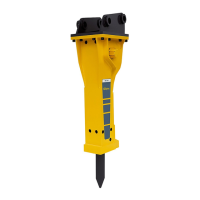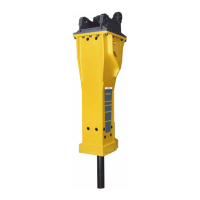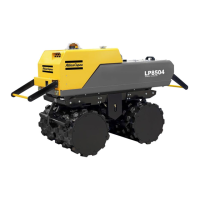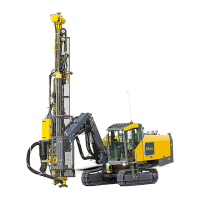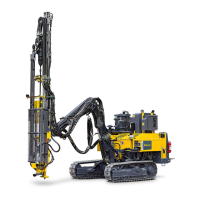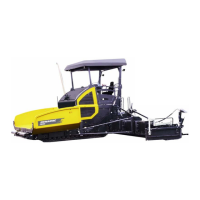Checking and cleaning the
DustProtector system
An important factor for the DustProtector operation
is that the floating ring which moves in a radial
direction can follow the movements of the breaker
and the working tool.
If dust penetrates it, it may block up the available
installation space and interfere with the
DustProtector system operation.
◆
Regularly check that the floating ring (E) can
move freely.
NOTICE Environmental damage due to chisel
paste
Chisel paste is environmentally harmful and must
not penetrate the ground or enter the water table
or water supplies.
►
Dispose of chisel paste polluted by dust and of
cloths with chisel paste in accordance with the
applicable regulations to avoid environmental
hazards.
Regular cleaning and greasing of the installed
parts and their holders safeguards their operation
and improves the availability of the hydraulic
breaker.
The inspection frequency depends on how much
dust is generated:
Normal dust generation:
once a week (assuming 40–50 hours of operation).
◆
Check more frequently if the floating ring (E) is
stuck.
◆
Remove the floating ring (E), counter ring (D)
and guide ring (F) (see chapter DustProtector/
Removal).
◆
Clean the space in front of the flexible wiper (A)
of all loose dust.
◆
Check the wiper (A) for damage.
◆
Replace the wiper (A) if it is damaged.
◆
Check the inside diameter of the floating
ring (E) with a suitable test gauge or with a
inside calliper.
Type Size information
on test gauge
D
max
HB 2000 DP Ø 145 150 mm
HB 2500 DP Ø 155 160 mm
The diameter measured must not exceed the
maximum permissible diameter D
max
.
◆
If it has eroded so much that its inside diameter
has become too great, replace the floating
ring (E).
◆
Clean and grease the floating ring (E), counter
ring (D) and guide ring (F) and install them
again (see chapter DustProtector/Installation).
Safety and operating instructions HB 2000, 2000 DP, 2500, 2500 DP
50 © Construction Tools GmbH | 3390 5090 01 | 2016-05-23
Original instructions
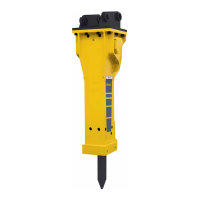
